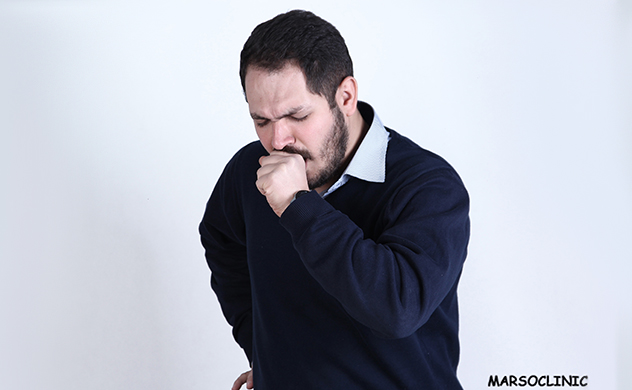Emphysema is one of the problems in the lungs that usually occurs in smokers years after they start smoking and causes severe shortness of breath.
Emphysema is classified as COPDs or chronic obstructive pulmonary disease. In the following, we will introduce you to the stages of emphysema.
what you will read next :
What is pulmonary emphysema?
There are air sacs in your lungs called aerial alveoli. The walls of these natural alveoli are created to be elastic and stretchable. Following the damage caused by smoking, the wall between these air sacs will be severely damaged and will lose its normal elasticity, gradually, the wall between the small sacs also disappears, and the smoker’s lungs will have large, shapeless air sacs instead of multiple alveoli with a healthy elastic wall, this complication is called emphysema.
In this case, your lungs can no longer exchange the oxygen in the inhaled air and the carbon dioxide in the lungs well, your blood oxygen will drop and you will also experience shortness of breath.
What are the underlying causes of emphysema and COPDs in general?
- Cigarettes (most important)

- Genetics
- High age
Prolonged exposure to chemical gases and respiratory stimuli
Are among the underlying causes of emphysema and CLOPDs.
What are the symptoms of a person with emphysema?
Symptoms of a person with emphysema include:
In the very early stages, a person does not have any particular symptoms, only a slight shortness of breath may occur in his activities.
Over time, as the damage to the lungs progresses and the emphysema progresses, the symptoms appear and without proper treatment, they get worse every day.
Symptoms include:
- Chronic cough with profuse sputum

- Shortness of breath, which initially occurs only during strenuous physical activity and gradually progresses to the point that even a person at rest suffers from shortness of breath.
- Feeling of tightness and suffocation in the chest
- There is a special sound when breathing that is similar to a whistling or squeaky sound.
There is no cure for emphysema and COPDs. This disease is progressing and getting worse every day. Physicians define several stages or stages to describe emphysema, from mild to very severe, in order to agree on the severity and severity of emphysema and to describe it harmoniously and academically.
What are 4 stages of emphysema?
Here is the GOLD emphysema staging system:
Global Initiative for chronic obstructive Lung disease
Knowing the concept of several criteria is essential for this staging.
The amount of air you can blowout out of your lungs in a second is measured by doctors with a spirometer and shown as FEV1.
How is the pre-staging examination done by the doctor?
Your doctor will also check the following before staging:
The number of times you have been hospitalized in the last year due to a respiratory problem (equivalent to the number of exacerbations)
- Also, a CT scan of your lungs will probably be done before staging.
How are the severity of emphysema examined?
By putting all of the above information together, your doctor will place you in one of the following four stages in terms of the severity of your emphysema.
1. Stage or Group A (GOLD1 or 2)
Respiratory symptoms are very mild.
FEV1:
Equal to or more than eighty percent.
You were not hospitalized at all last year due to the severity of your lung problems.
You have not had a respiratory attack or flare-up in the past year or you have only had it once, which has improved without hospitalization
2. Stage or Group B (Gold 1 or 2):
FEV1:
Less than eighty percent and more than fifty percent.
Your respiratory symptoms are more severe than group A.
You may have had a severe flare-up in the past year but were not hospitalized because of it.
Most people who see a doctor with emphysema and COPD are on the same stage.
Wheezing while breathing, shortness of breath and cough are some of the symptoms that people go to the doctor with.
3. Stage or Group C (Gold 3 or 4):
The ability of air to flow in and out of your lungs is greatly reduced
FEV1:
It is less than fifty percent and more than thirty percent.
Have you had more than one flare-up in the last year or you have been hospitalized at least once in the last year for a lung problem.
4. Stage or Group D (Gold 3 or 4):
Inhaling and exhaling has become extremely difficult for you, even at rest.
You have had at least two respiratory attacks in the past year, or you have been hospitalized for a lung problem at least once.
This stage is called the final stage or end stage by doctors
Your lungs are overworked and you may have a flare-up that poses a serious threat to your life.
In addition to valid staging, doctors sometimes make another classification based on how much emphysema disrupts your normal daily life.
This staging is called BODE which:
B Indicates the Body mass index
O on obstruction, is the amount of damage to your lungs that results in irreversible obstruction of the airways.
D on dyspnea, that is how often and when do you experience shortness of breath and suffocation?
And E on exercise capacity.
Studies show that using BODE can better determine the prognosis and response to your emphysema treatment.
